metamorworks/iStock via Getty Images
S&P Global PMI Commodity Price & Supply Indicators highlighted that manufacturers continued to battle against rising prices and shortages for a wide range of items in February, with the fallout from the war in Ukraine set to reverse the recent improvement in international supply chain conditions.
The number of manufacturers reporting rising energy costs was the highest since data were first available in January 2005, sending an early warning that escalating oil and gas prices are set to unleash another wave of inflationary pressures around the world.
Reports citing increased energy prices were more than ten times greater than normal in February (10.6), which compared with 9.5 times greater than normal in January and exceeded the previous peak of 8.6 recorded in July 2008. Meanwhile, price pressures for semiconductors were stronger than those seen for any other item monitored in February, with this index reaching a fresh record high of 28.3.
Stretched international supply chains meant that reports of supply shortages by manufacturers around the world remained 5.8 times higher than usual in February, although this was down from a peak of 9.0 in June 2021. By item, the most acute difficulties were for Transport, as delays at ports and constrained haulage capacity meant that shortages were 24.0 times higher than usual. Semiconductor shortages also remained a key concern for global manufacturers, with this index reaching a four-month high of 7.4.
S&P Global PMI Commodity Price & Supply Indicators were devised to provide timely insights into price and supply pressures for key commodities, services and product groups amid heightened concerns surrounding rising prices and material shortages. The indices are derived from the S&P Global monthly Purchasing Managers’ Index™ (PMI) business surveys for the manufacturing sector, which cover variables such as output, new orders, purchase prices and suppliers’ delivery times, with monthly data collected from approximately 10,000 companies worldwide.
Index measuring prices paid for energy hits record high
Inflationary pressures were sustained in February, with the number of manufacturing firms worldwide reporting higher prices for raw materials nearly four-and-a-half times higher than normal. A fresh series record of higher prices was reported for semiconductors while reports of rising energy prices were also at a record high amid surging gas prices. This is in line with S&P Global Pricing and Purchasing data pointing to a renewed record increase in the cost of energy (see below).
In the wake of the Russian invasion of Ukraine, the cost of energy became especially volatile, with the benchmark for global oil prices (Brent) exceeding $130 per barrel at the start of the conflict. Moreover, given the dependence of European economies on Russian gas and existing price and supply pressures, reports of rising energy costs and strained supply are likely to continue throughout the year.
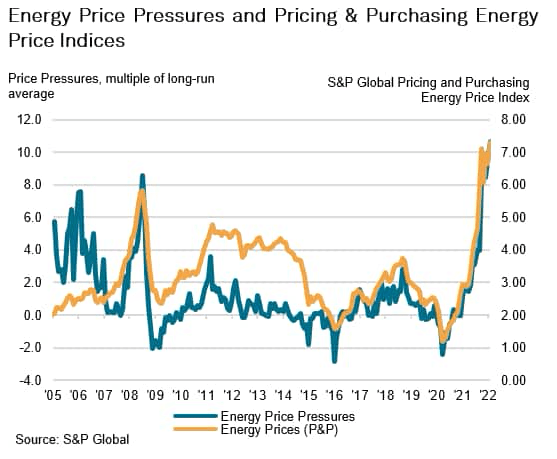
Strong commodity price inflation and ongoing supply shortages reported in February
Comparisons of benchmark pricing data against Price Pressure Indicators derived from Manufacturing PMI surveys indicate that the latter is a useful bellwether for price trends in commodity markets.
Looking at the price of aluminium and copper on the London Metal Exchange, the respective price pressure indices for the materials are closely correlated with average prices seen over the month.
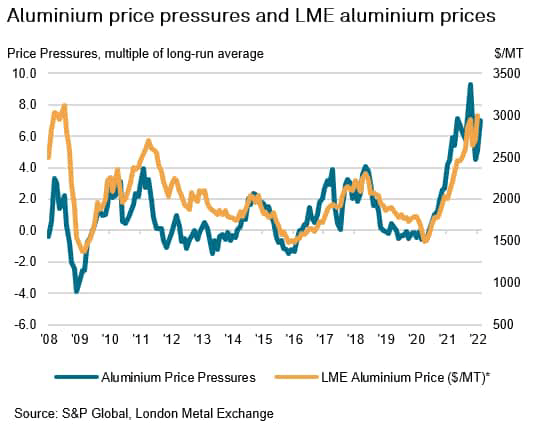
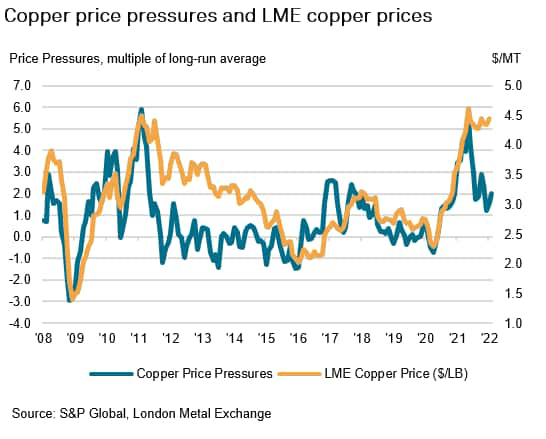
Pandemic-induced supply shortages ease but remain a driver of global inflation
As has been the case since the middle of 2021, manufacturers globally reported severe disruption in electrical components amid stronger demand. Semiconductor and electrical item shortages have plagued the global manufacturing sector recovery, with an unprecedented number of firms reporting the inputs in short supply. While there were tentative signs of easing pressures at the turn of the year, the rise in COVID-19 cases related to the Omicron variant has forced a renewed rise in the number of companies reporting shortages.
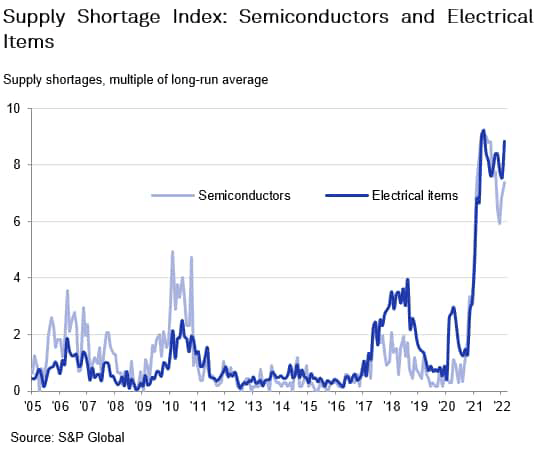
As a result, firms have reported surging price pressures for these inputs with many companies commenting that shortages have led to sharp rises in costs. Moreover, price and supply pressures for semiconductors especially have had a knock-on effect across the global manufacturing sector and have held back a stronger recovery in production, with anecdotal evidence for the JPMorgan Global Manufacturing PMI highlighting material shortages and rising costs as a hinderance to an accelerated recovery. This is most prevalent in key sectors such as automotive, as car production has become increasingly reliant on semiconductor technology.
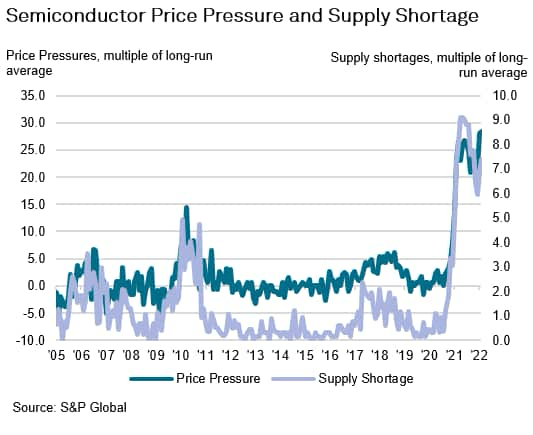
Price and supply chain outlook
The outlook for global inflationary pressures appears skewed to the upside due to escalating energy prices and renewed disruptions to international supply chains. While COVID-19 restrictions have been lifted across much of the world, supply chain disruption is expected to continue feeding into purchasing prices, especially given heightened concerns surrounding supply chains given the Russia-Ukraine conflict and the prospect of renewed production stoppages in China due to zero-COVID policies.
The pace at which price and supply pressures return to stability will be contingent on how quickly logistical disruptions are resolved and capacity is rebuilt, or in some instances “re-shored” to help resolve supply and demand imbalances.
Hence, the evolution of our PMI Commodity Price & Supply Indicators will be a key component in tracking the health of global supply chains in the wake of new potential disruptions.
Editor’s Note: The summary bullets for this article were chosen by Seeking Alpha editors.


Be the first to comment